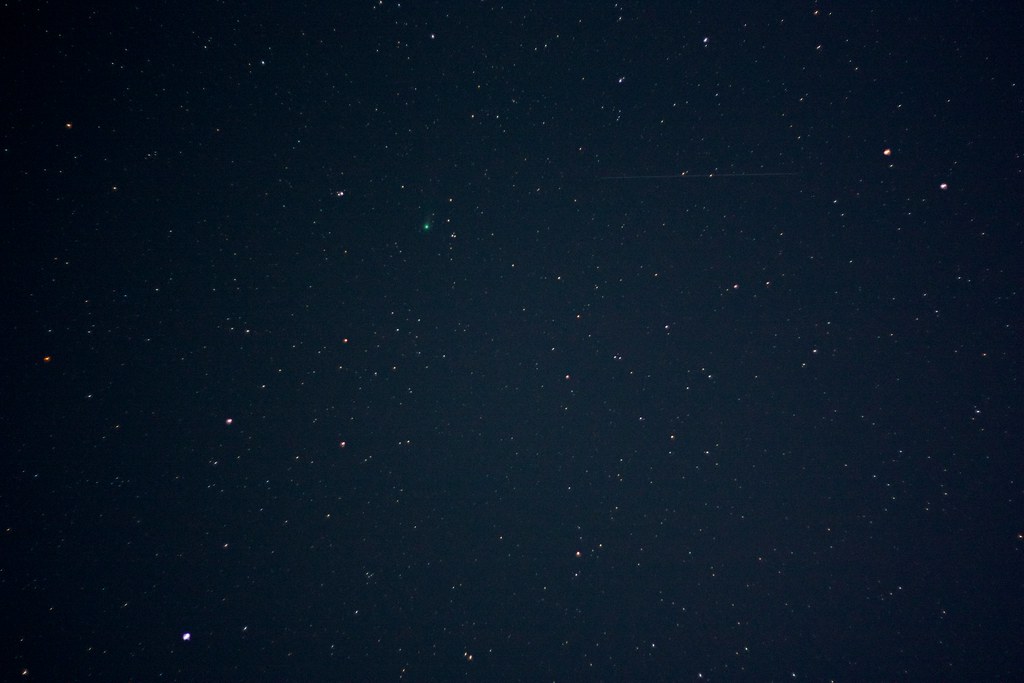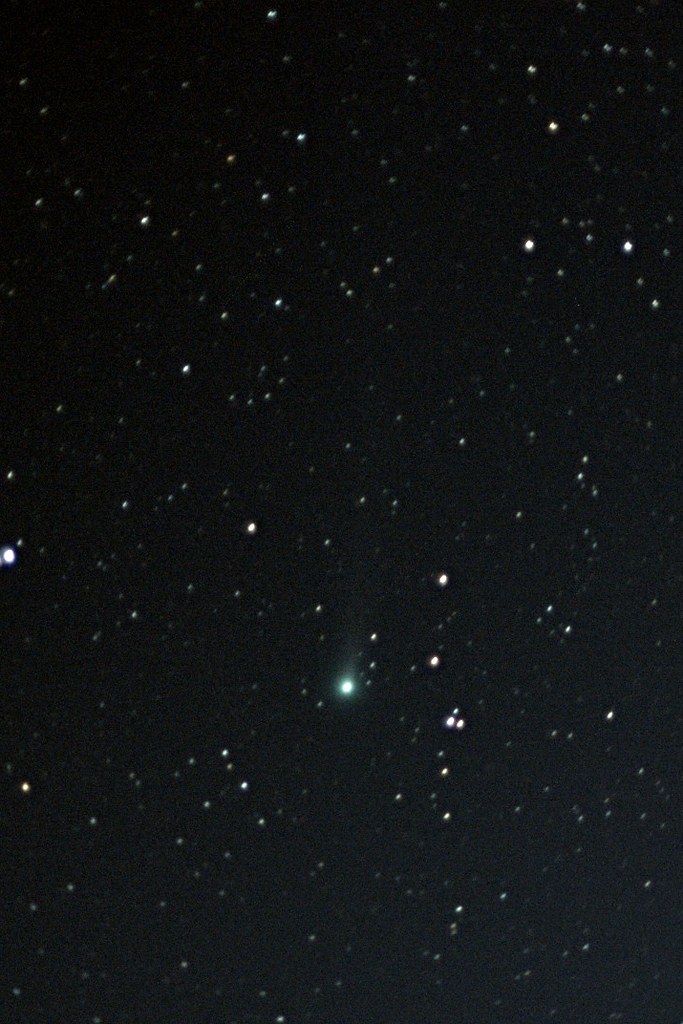The Hunt for Comet ISON
My alarm went off at 5am and I roused myself from a warm bed. Downstairs the stove had long died out. I pulled on my warm winter layers and, loaded up with a camera, tripod and binoculars, stepped out in to a deep cold night. Over the hill above the cottage shone the Moon and Jupiter whilst a star speckled sky stretched from west to east and north to south. A few faint patches of cloud drifted slowly through high up on a chilling wind but for the most part it was clear.
I headed down to the stony beach by Loch Linnhe and enjoyed the cold views out across the loch to the distant lights of Ballachulish and the dark, skulking shapes of the Glencoe hills. With the binoculars I scanned the sky above me and soon picked out the fuzzy spot of green light that marked Comet C/2013 R1 Lovejoy’s position close to the constellation of Ursa Major. With the 50mm lens on my camera I took a series of photos that I could later stack and crop to create a pleasing image of this comet which has recently developed a stunning filamentary tail.
It was still too early for a chance of seeing Comet ISON so I headed back to the house and got out the 80mm telescope to have a sweep around the sky, examining a few objects including the Moon, Comet Lovejoy, the Double Cluster and Jupiter.
After another brief warm up inside I saw that the bright star Spica in Virgo would soon be above the horizon and so headed back down to the lochside. As dawn approached a little cloud had appeared on the eastern horizon. I scanned the eastern horizon and continued to take photos but unfortunately I fear that the mountains may have been obscuring the potential views of ISON. Although Spica rose and was easily visible I didn’t see Mercury and eventually the approach of the sun washed out all detail in the sky.


